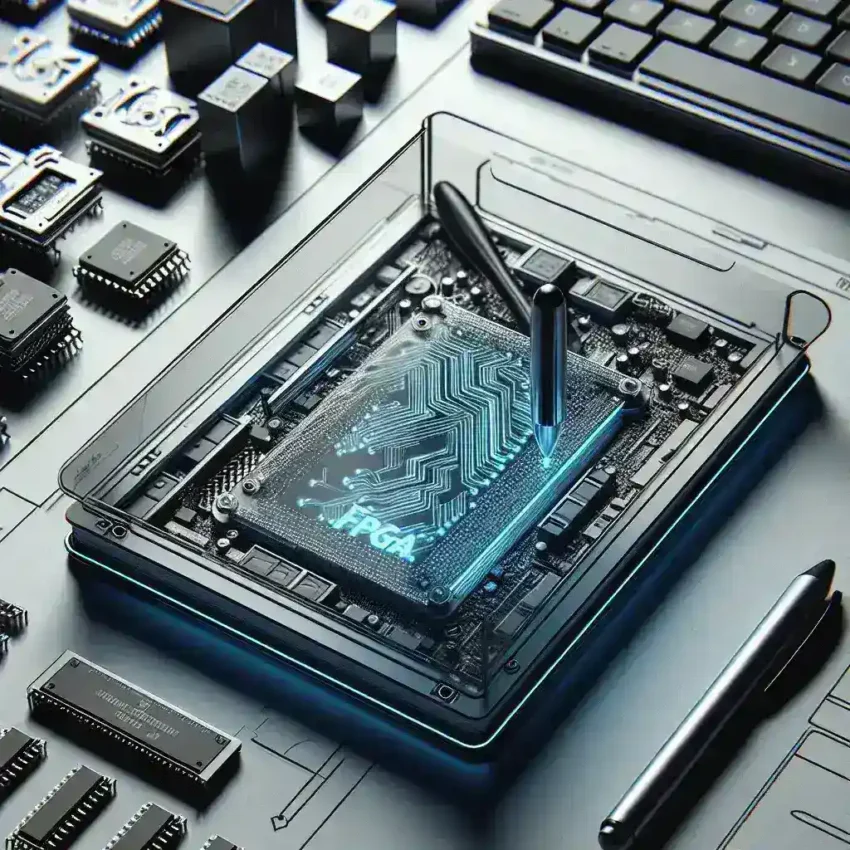Introduction
In the rapidly evolving world of technology, the demand for customizable hardware solutions has never been greater. One notable advancement is the use of Field Programmable Gate Arrays (FPGAs) in notebook design, offering users unparalleled flexibility and adaptability. This article delves into the reasons why FPGA style notebook design provides flexible hardware options that cater to a diverse range of needs and applications.
Understanding FPGA Technology
FPGAs are integrated circuits that can be configured by the user after manufacturing. This unique characteristic allows for a wide range of applications, from telecommunications to automotive systems. Unlike traditional hardware, which is fixed and can only perform specific tasks, FPGAs can be reprogrammed to suit various requirements. This flexibility is a game-changer, especially in environments where technology is constantly progressing.
Historical Context
The inception of FPGA technology dates back to the 1980s, marking a significant turning point in hardware design. Initially, FPGAs were used primarily for prototyping and testing purposes. However, as the technology improved, their application expanded into mainstream markets, including consumer electronics and personal computing. The rise of FPGA style notebook designs represents the culmination of decades of innovation in this field.
Benefits of FPGA Style Notebook Design
- Customizability: One of the primary advantages of FPGA notebooks is their ability to be tailored to specific user needs. Whether for gaming, machine learning, or general office tasks, users can program their FPGAs to optimize performance for particular applications.
- Longevity: With the rapid pace of technological advancements, hardware often becomes obsolete quickly. FPGA notebooks can be reconfigured to support new software and protocols, extending their useful life and reducing electronic waste.
- Real-Time Processing: FPGAs excel in parallel processing, making them ideal for handling tasks that require real-time data processing, such as video encoding, image processing, and complex simulations.
- Cost Efficiency: While the initial investment for FPGA technology may be higher, the long-term savings through adaptability and longevity often outweigh these costs. Businesses can avoid the expense of frequently upgrading their hardware.
Applications of FPGA Style Notebooks
The flexibility of FPGA notebooks has allowed them to penetrate various sectors. Here are some notable applications:
1. Education and Research
In academic settings, FPGA notebooks provide students and researchers with a hands-on approach to learning about hardware design and programming. Educational institutions can easily adapt their FPGA systems to align with current curriculum demands.
2. Gaming
For gaming enthusiasts, FPGA notebooks can be programmed to enhance graphics processing and reduce latency during gameplay. This adaptability ensures that users can enjoy a seamless gaming experience regardless of evolving game requirements.
3. Machine Learning
The rise of artificial intelligence has necessitated powerful hardware solutions. FPGA notebooks can be customized to optimize algorithms and improve processing speeds, making them a valuable tool for data scientists and AI developers.
4. Telecommunications
In the telecommunications sector, FPGA technology is crucial for signal processing and data transfer. The ability to reconfigure hardware on-the-fly allows companies to adapt to changing networks and standards efficiently.
Future Predictions for FPGA Technology
As we look ahead, the potential for FPGA style notebook designs appears limitless. With the ongoing advancements in AI and machine learning, it is likely that we will see an increased adoption of FPGAs for specialized computing tasks. Furthermore, as more industries recognize the benefits of flexible hardware, we can expect a broader push towards integrating FPGAs into everyday devices.
Challenges and Considerations
Despite the numerous benefits, there are challenges associated with FPGA notebooks. Programming FPGAs requires specialized knowledge, which can be a barrier for some users. Additionally, the complexity of configuring an FPGA can lead to longer development times compared to traditional hardware solutions. However, as educational resources and tools become more accessible, these challenges are likely to diminish.
Conclusion
The growth of FPGA style notebook design signifies a shift towards more flexible and adaptable computing solutions. As technology continues to evolve, the ability to customize hardware will become increasingly important. With their unique capabilities, FPGA notebooks are well-positioned to meet the needs of consumers and businesses alike, paving the way for a future filled with innovative possibilities.

